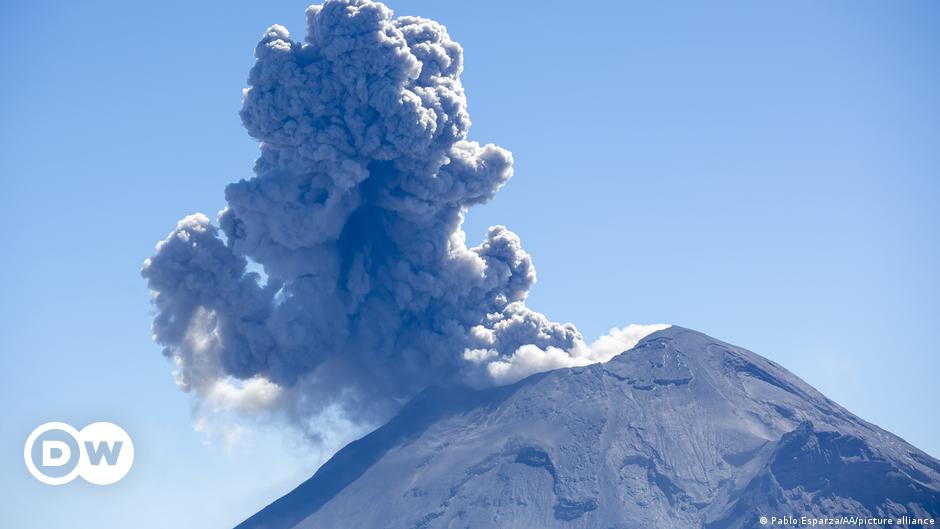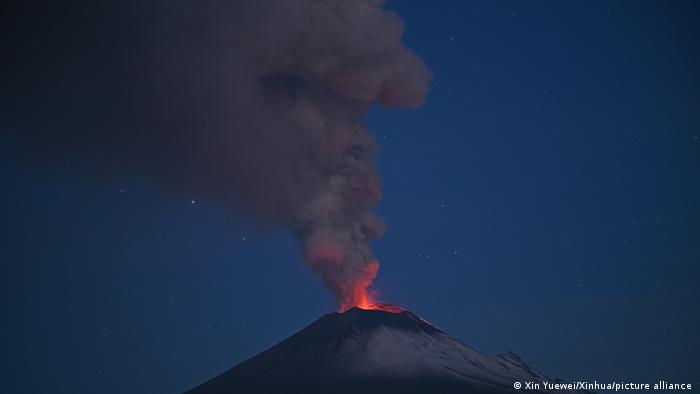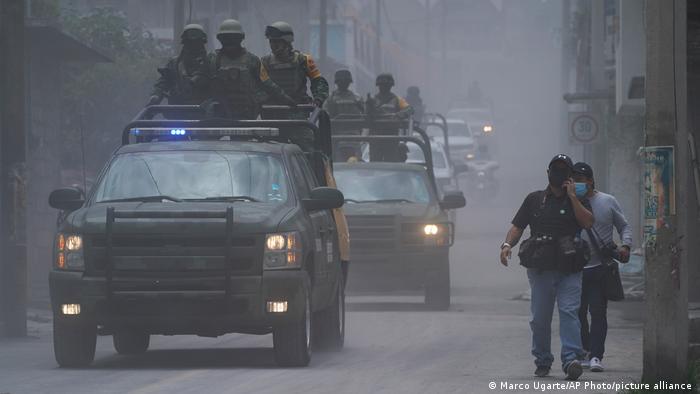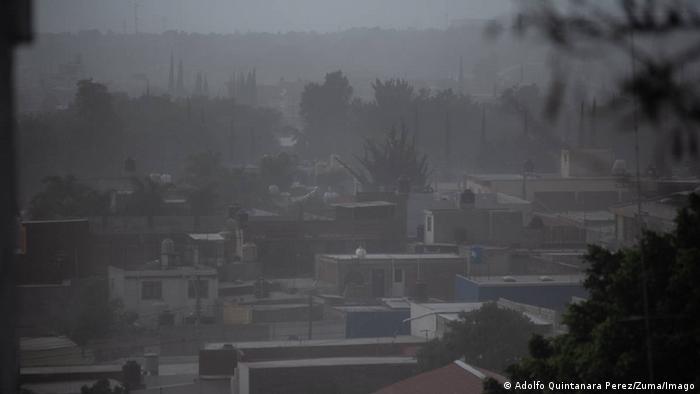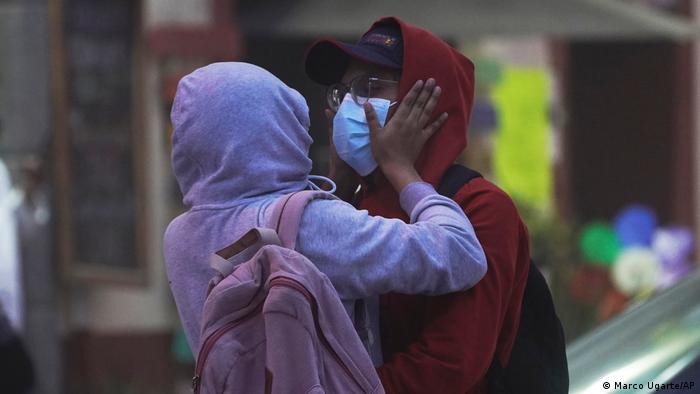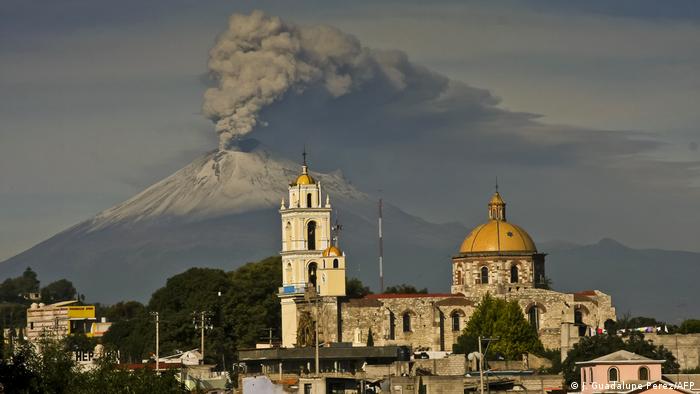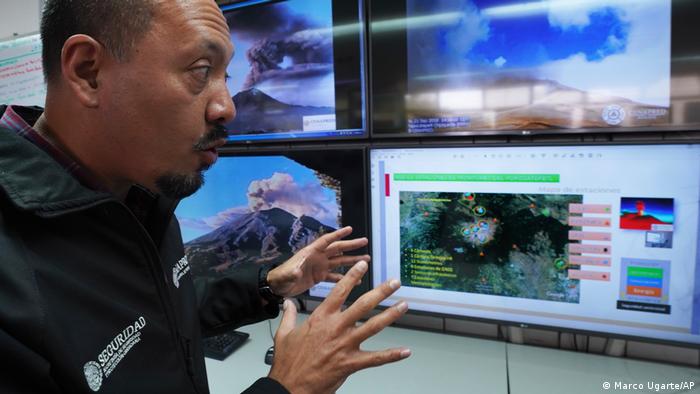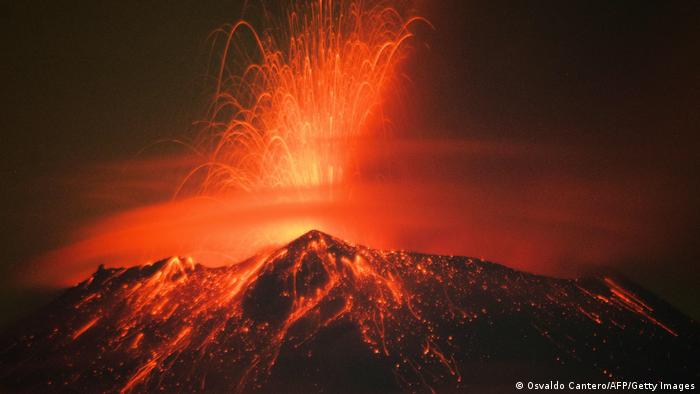The Popocatépetl volcano lives up to its name: In the Aztec language Nahuatl, it means “smoking mountain”. In the past few days, it has repeatedly emitted ash, steam and gas. the inside Central Mexico Located between Mexico City and Puebla, Popocatépetl is considered one of the most dangerous volcanoes in the world, as an estimated 25 million people live within a radius of 100 kilometers. The Mexican civil protection announced the warning level “yellow phase three” on Sunday.
The Mexican early warning system for volcanic activity works in principle like a traffic light and has the colors green, yellow and red, explains Hugo Delgado, a researcher at the Institute of Geophysics at UNAM, in an interview with DW before the current warning level was increased.
According to Delgado, the yellow stage consists of three phases. In the second, for example, the maintenance of the emergency shelters and the inspection of the emergency exits and evacuation routes begin. In the current third yellow phase, civil defense forces are deployed with the support of the army and the population begins to prepare for a possible evacuation. Food, blankets and beds are also provided for the various accommodations. The evacuation begins in the red stage.
Is there imminent danger?
After a long period of inactivity, Popocatépetl has been active again since 1994 and has repeatedly shown phases of increased activity since then, explains Thomas Walter, geologist and volcanologist at the GeoForschungszentrum Potsdam. But in his opinion, the greatest danger for the population does not come from the Popocatépetl, but from the monogenetic volcanic field on which the capital, Mexico City, is built. A monogenetic field typically contains between ten and a hundred volcanoes. “But that doesn’t mean that there will be a volcanic eruption tomorrow. We don’t know,” said the volcanologist.
Walter was in Mexico several times and was involved in research projects on several Mexican volcanoes, including the second largest volcano in Mexico at 5452 meters, the Popocatépetl.
Increased activity since the 1990s
On December 21, 1994, Popocatépetl produced the first ash emissions in 70 years after a year of increasing seismic activity and sulfur dioxide emissions. Several towns on the northeastern flank of the volcano were immediately evacuated, but most residents were allowed to return after a week.
Episodic low-altitude ash eruptions continued through 1995. In March 1996 a new round of activity began with increasing ash emissions and the growth of a lava dome in the summit crater. An April 30, 1996 eruption killed five climbers who ignored warnings to stay away from the mountain.
Under satellite observation
The increased activity of Popocatépetl is not entirely surprising, according to the German researcher Thomas Walter: “It is one of the most continuously active volcanoes that we know of and is accordingly observed very closely.” This thorough observation includes not only the usual cameras and seismometers, but also two German earth observation satellites: TerraSAR-X and TanDEM-X.
“We were able to look into the crater from above with these satellites and noticed that the ground had been rising and sinking regularly for about two or three years,” says Walter. Viewed from the side, the volcano would always look the same, but viewed from above, the multiply nested craters and their movement can be observed very well.
Glowing bullets in the night
According to the volcanologist, what can currently be observed particularly well in Mexico are the so-called “volcanic bombs”. These are particles with a diameter of more than 64 mm that are ejected from the volcano. Especially at night, these glowing missiles create an impressive natural spectacle. Because of their relatively high weight, these particles fall to the ground in the immediate vicinity of the Popocatépetl and therefore cause relatively little damage.
“These events already show that the Popocatépetl is currently much more explosive and that you have to be more vigilant at the moment. You shouldn’t downplay the activity, but you don’t have to stir up panic either,” says the Potsdam volcanologist.
